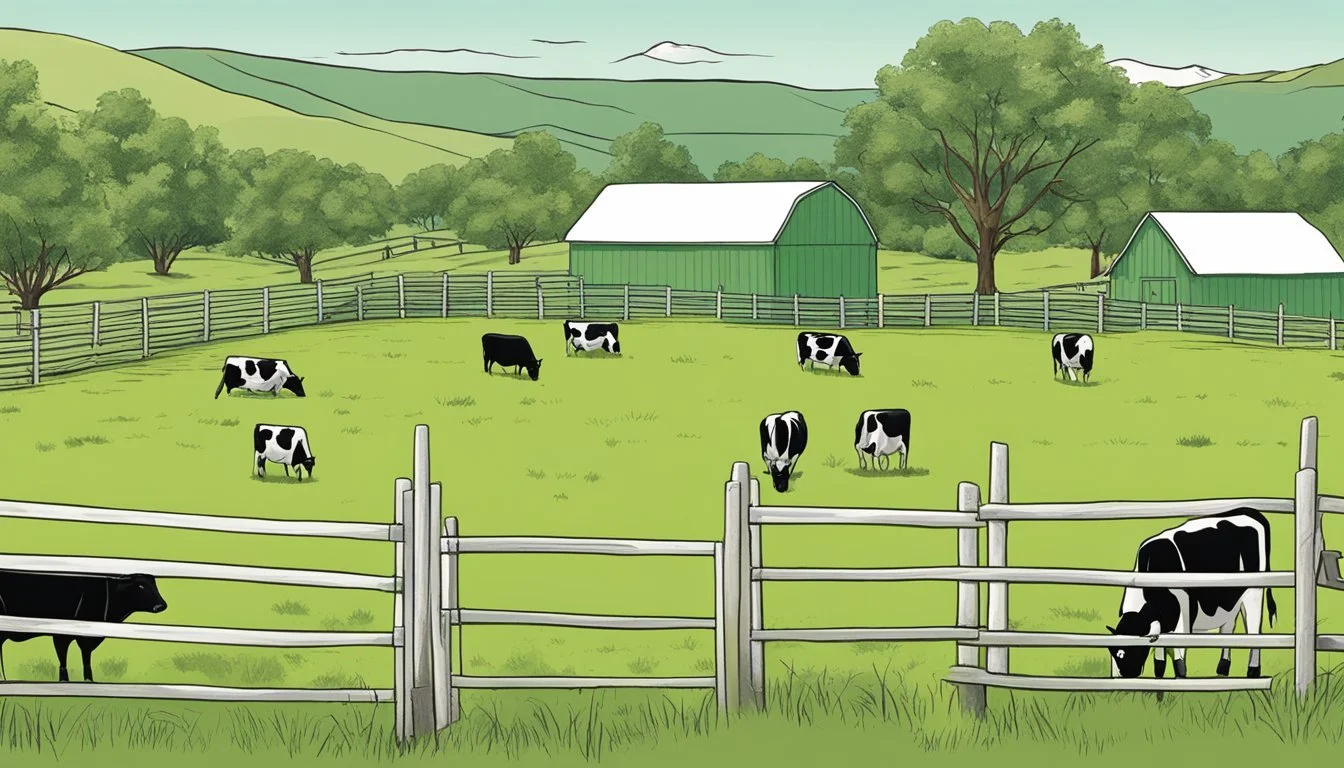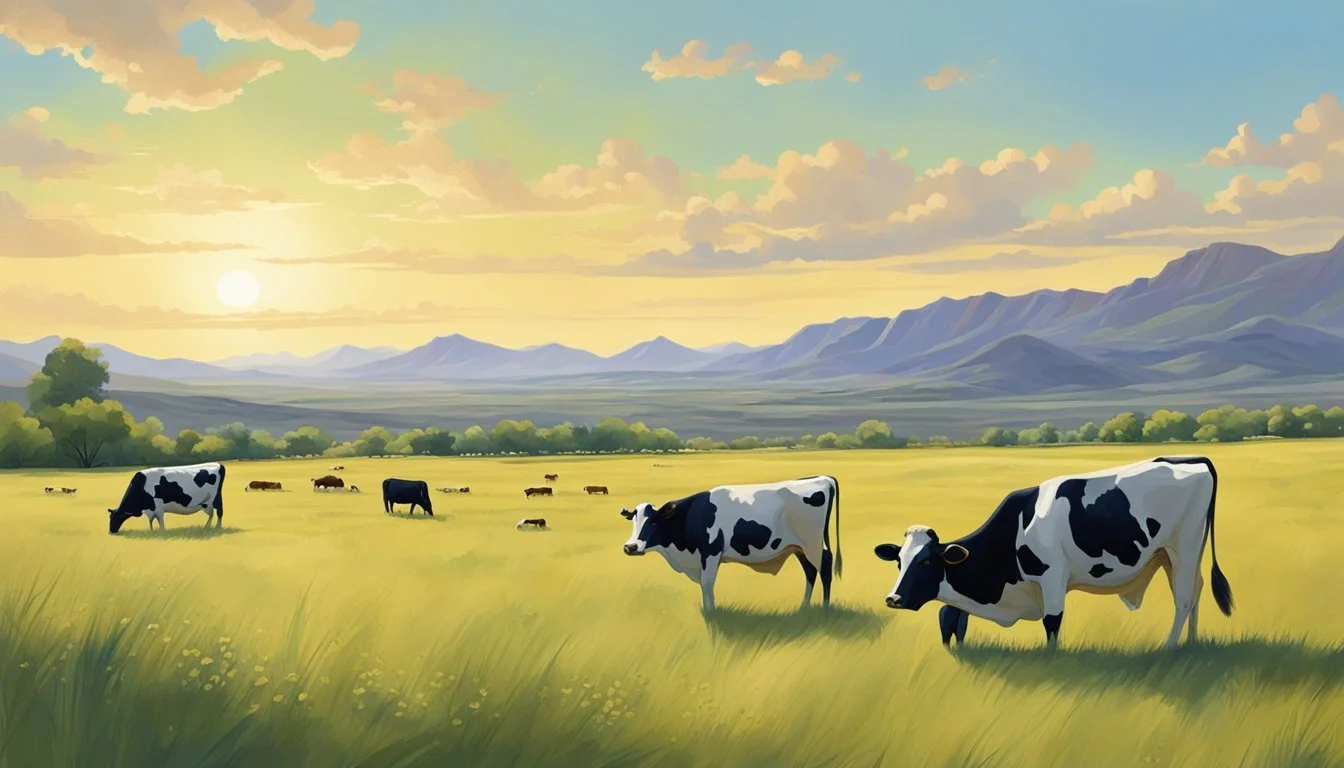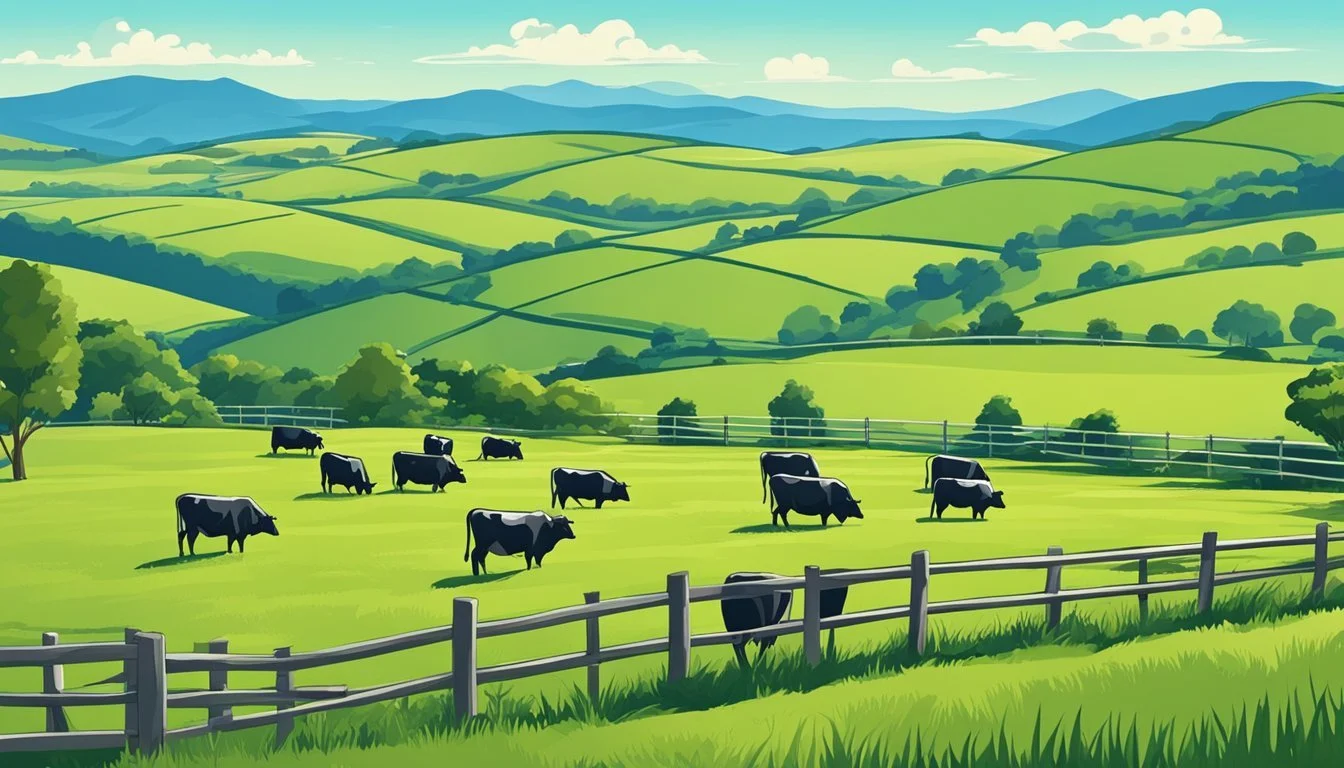Stocking Rate New Mexico
Determining Your Land's Cattle Capacity
Determining the appropriate stocking rate for cattle in New Mexico is a critical component for successful ranch management and land stewardship. Stocking rate, often expressed in animal units per acre (AUs/acre), hinges on the delicate balance between the number of livestock the land can support and the preservation of the rangeland's health. The semi-arid climate of New Mexico presents unique challenges to this balance due to varying rainfall, forage types, and land conditions.
Livestock producers must consider several factors to ascertain the correct number of cows their property can support. These include the quality and quantity of available forage, average animal weight, and the seasonal variability of the land’s resources. In New Mexico, where forage quantity can fluctuate considerably from year to year, it is advisable to maintain flexible stocking rates that adapt to current conditions. Managing stocking rates isn't a one-size-fits-all approach; it demands awareness of environmental limitations and a commitment to sustainable grazing practices.
Producers can use state and local resources, coupled with their understanding of their specific acreage, to make informed decisions. By achieving the ideal stocking rate, ranchers can ensure their cattle are well-nourished, their land remains productive, and the natural ecosystem is preserved for future generations. The determination of the correct stocking rate in New Mexico requires ongoing attention and adjustment to align with environmental changes and conservation goals.
Understanding Stocking Rates
When managing rangelands in New Mexico, determining the appropriate stocking rate is crucial for both livestock productivity and ecosystem sustainability. Stocking rate decisions directly influence the rangeland's condition, and a balance is essential to avoid overgrazing and ensure a stable ecosystem.
Defining Stocking Rate and Animal Unit
Stocking rate is the term used to define the number of livestock that can be sustainably supported on a given amount of land over a specific period. This calculation is typically expressed as animal units per acre (AUs/acre), where one animal unit corresponds to one mature cow of about 1,000 pounds or its equivalent.
In New Mexico's varied climates and ecosystems, a single AU may differ based on the type and size of the livestock. For example:
1 mature cow = 1 AU
1 bull = 1.25 AU
1 horse = 1.25 AU
5 sheep = 1 AU
5 goats = 1 AU
The actual stocking density may vary significantly. It depends not only on the weight of the animals but also on land productivity, type of forage available, and the specific nutritional needs of the livestock.
Importance of Stocking Density in Rangeland Health
The health of rangeland is sensitive to the stocking density, the number of animals per unit area at any given moment. An optimal stocking density maintains the quality and quantity of forage, promoting regrowth and preventing erosion.
Determining the right stocking rate involves:
Evaluating forage quality and quantity
Assessing livestock needs based on species and class
Considering variable climatic conditions
This delicate balance ensures that the land can support its assigned animal units without degrading rangeland integrity. In New Mexico, where rangelands can be arid and forage scarce, calculating the precise number of cows per acre a property can support becomes an exercise in balancing livestock needs with environmental conservation.
Grazing Management Principles
Effective grazing management is crucial for maximizing cattle stocking rates in New Mexico while preserving pasture health. Adhering to sound grazing practices ensures sustainable forage consumption and promotes biodiversity.
Rotational Grazing vs. Continuous Grazing
Rotational Grazing is a method where cattle are moved between pastures or paddocks designed to allow forage plants to recover from grazing. It involves controlling livestock access to enhance forage utilization and prevent overgrazing. This method can potentially increase stocking rates as it optimizes forage production.
In contrast, Continuous Grazing allows livestock unrestricted access to a pasture throughout the grazing season. This can lead to uneven usage of the forage, with some areas being overgrazed while others are underutilized. Continuous grazing may make it harder to achieve higher stocking rates efficiently due to the risk of pasture degradation.
Grazing Season and Managing Forage Consumption
The length of the Grazing Season in New Mexico varies, thus managing forage consumption during available months is pivotal. Livestock producers should carefully calculate a grazing strategy that matches the carrying capacity of the land with the nutritional needs of the herd to optimize both animal and pasture productivity.
Grazing Period Forage Allocation Early Season Cautious use to prevent early overgrazing Peak Season Higher utilization as forage is at its prime Late Season Reduced stocking density to promote forage recovery
Pasture Rest and Recovery
Pasture Rest is essential to prevent long-term damage to rangelands and sustain high-quality forage production. Periodically resting a pasture promotes root systems' recovery, increases the resilience of the pasture, and enhances water infiltration. Recovery periods should align with plant growth cycles and environmental conditions.
Impact of Grazing on Biodiversity
Grazing management also directly affects the Biodiversity of pasture ecosystems. Proper grazing systems like rotational grazing can positively impact the land by sustaining a variety of plant and animal species. The maintenance of diverse habitats is an indicator of a healthy rangeland and supports long-term viability and productivity.
Each of these subsections outlines practices that, when strategically applied, contribute to a successful and sustainable grazing management plan in New Mexico. Balancing cattle numbers with available forage, and allowing for ample recovery time, can lead to increased stocking rates while ensuring the longevity and ecological health of the grazed pastures.
Calculating Carrying Capacity
Calculating the carrying capacity of a property in New Mexico involves determining the number of cows an acre can sustain while maintaining a balance between animal needs and forage availability.
Calculating Animal Unit Months (AUM)
Animal Unit Months (AUM) are crucial for understanding carrying capacity. One AUM represents the amount of forage needed to sustain a 1,000-pound cow, or its equivalent, for one month. To calculate AUMs, farmers and ranchers must consider the weight and type of livestock since different animals have different forage requirements. Typically, an acre per cow ratio will vary based on the AUM rating of the forage available.
For example:
Livestock Type Weight Range (lbs) AUM per Animal Cow (beef) 1000 1.0 Cow/Calf pair 1200 1.2 Sheep or Goat 150 0.15
Assessing Forage Production and Demand
Forage production must be assessed to determine how much dry matter the pasture produces in a given period. This is measured in pounds per acre and is directly related to the carrying capacity. Dry matter demand refers to the total pounds of forage dry matter that the livestock will require. Carrying capacity is calculated by dividing total forage yield by total forage demand over a specified time period. It is essential to have accurate measurements of forage yield and ensure that the figures represent the useable forage after accounting for waste.
For example:
If a pasture yields 2,000 pounds of useable forage per acre and one cow requires 26 pounds of forage per day, the pasture can support that cow for approximately 77 days (2,000 ÷ 26 ≈ 77).Adjusting for Pasture Health and Forage Quality
Pasture health directly influences carrying capacity, as well-fed and healthy grasslands will provide better forage. It's important to adjust calculations for variations in forage quality, which can be affected by factors like soil fertility, precipitation patterns, and grazing management practices. Identifying indicators of pasture health like plant species diversity and ground cover can inform the continual adjustment of stocking rates to optimize forage utilization without degrading pasture resources. Regular monitoring of pasture condition is recommended to ensure the sustainability of grazing practices.
Factors Influencing Stocking Rates in New Mexico
When determining the appropriate stocking rate for cattle in New Mexico, several environmental factors play a pivotal role. These include the regional climate and precipitation, the quality of the soil, and the specific local conditions that directly affect a property's carrying capacity.
Climate Considerations and Precipitation
In New Mexico, climate is a crucial determinant of how many cows per acre a property can sustainably support. The state is characterized by an arid to semi-arid climate, with wide variations in annual precipitation that can significantly influence forage availability. Annual precipitation in different regions of New Mexico can range from less than 10 inches to over 20 inches. It's essential for ranchers to understand that periods of drought can drastically reduce the carrying capacity of the land, requiring a conservative approach to stocking rates to prevent overgrazing.
Soil Quality and Risks of Desertification
Soil quality is deeply interconnected with the health of the grazing lands. In New Mexico, soil degradation is an ongoing concern that can lead to desertification if not managed properly. It is important to assess soil fertility and structure, as these factors will influence forage production and sustainability. Overstocking can exacerbate soil degradation, further reducing the land's ability to support cattle and leading to a negative cycle of reduced forage and increased soil erosion.
Impact of Local Conditions on Stocking Capacity
Local conditions such as proximity to water sources and the topography of the land can have a significant impact on stocking capacity. In New Mexico, areas that are farther from water or have a higher slope may require lower stocking rates due to the decreased accessibility for cattle and potential for overuse of vegetation near water sources. Careful analysis of these conditions is essential to determine the most appropriate and sustainable stocking rate for a given property.
By taking into account these specific environmental factors, stakeholders can make informed decisions that balance ecological sustainability and financial viability.
Implementing Effective Stocking Strategies
To maintain a productive and sustainable grazing system in New Mexico, property owners must implement effective stocking strategies that are responsive to the specific land and climate conditions. These strategies should enhance pasture longevity and animal health while optimizing the economic return.
Creating a Pasture Inventory and Utilization Plan
A crucial step is developing a pasture inventory and utilization plan by assessing the carrying capacity in terms of animal unit equivalents (AUE). For example, they can determine the number of 1,000-lb cows that can graze on the available acreage for 12 months, considering an optimal utilization rate that prevents overgrazing. Property owners should evaluate pasture conditions, such as forage availability and quality, and delineate pastures into paddocks for controlled grazing.
Adapting to Changing Climatic and Environmental Conditions
In New Mexico, where environmental conditions can vary greatly, it's essential to design a stocking strategy that adapts to changing climatic conditions. Strategies might include flexible stocking rates that respond to drought or heavy rainfall, which can impact forage production and pasture recovery rates. Monitoring pasture conditions regularly allows for timely adjustments to stocking rates, ensuring sustainable utilization.
Diversification through Multi-Species Grazing
Multi-species grazing integrates different types of livestock, such as cattle and sheep, which utilize different plant species and can improve pasture conditions and utilization rates. This diversification can help control invasive species, reduce the parasite load, and distribute manure more evenly across the pastures. Using multi-species grazing, property owners can often increase total livestock productivity per acre while maintaining a balanced ecosystem.
Specifics for New Mexico Rangelands
When assessing the stocking rate for New Mexico rangelands, property owners must consider the unique characteristics of the land. The types of native pasture, the limitations set by the acreage, and the choice of livestock are all critical factors to determine how many cows the land can support.
Native Pasture Types and Grasses
New Mexico's rangelands are predominantly composed of two native pasture types: the Chihuahuan desert and the shortgrass prairie. Each has a distinctive set of grass species suited to the region's arid climate. Chihuahuan desert ranges are often covered with grasses like tobosa and black grama, while shortgrass prairie areas might primarily contain blue grama and buffalo grass.
Acreage Recommendations and Limitations
Rangeland experts advise that pasture acreage be carefully balanced with the number of cows it can sustainably support. New Mexico's arid conditions and the landscape's susceptibility to overgrazing necessitate conservative stocking rates. It is generally recommended to maintain lower livestock numbers to prevent degradation of the native grasses, which are crucial for the health of the ecosystem and the prevention of soil erosion.
Identifying the Most Profitable Livestock
Maximizing profits from livestock in New Mexico hinges upon selecting species and breeds that are well-adapted to the region's environmental conditions. Beef cattle often prove to be the most profitable livestock for these rangelands, with particular breeds demonstrating more resilience to the local climate and forage availability. Careful management that includes periodic assessments of pasture health is required to sustain profits while preserving the land.
Case Studies and Examples
This section provides a detailed look into how varying stocking strategies affect the ranching industry in New Mexico, showcasing successful approaches, recovery techniques, and the economic considerations associated with cattle stocking.
Successful Stocking Strategies in New Mexico
In New Mexico, strategic stocking has led to significant successes in ranch revenue. For example, some ranchers in the state have managed to double their gross revenue per acre compared to the state average by implementing intensive grazing management and infrastructure improvements such as water development and fencing. These strategies have enabled them to sustainably increase their stocking rates, with reports of gross revenue reaching up to $25.15 per acre, dwarfing the state average of $12.32 per acre.
Recovery from Overgrazing and Degraded Pastures
Recovery from overgrazing is a critical challenge many ranchers face. Case studies have shown that by conducting thorough pasture inventories and adjusting stocking rates appropriately, ranchers can allow for the land to recover while still maintaining a viable number of head of cattle. By applying a regenerative approach to grazing, which may include rotating grazing areas and allowing for periods of rest, producers can improve forage yield and restore health to degraded pastures.
Economic Impact of Stocking Decisions
The economic implications of stocking decisions are substantial. Choosing the correct stocking rate, which is the number of head of cattle per acre that the land can support without causing overgrazing, can make or break a ranch's profitability. It's a delicate balance; stocking too many cattle can lead to degraded pastures, whereas too few can result in under-utilized resources. The cost of infrastructure to support effective grazing management must also be factored in, with some ranchers investing an average of $35 per acre to enhance their stocking strategies and boost revenue.
Best Practices for Ranchers
To ensure a profitable and sustainable ranching operation in New Mexico, ranchers must focus on tailoring stocking rates to the specific needs of their property, maintaining pasture health, and seeking continuous education.
Regular Monitoring and Adjusting Stocking Rates
Ranchers should conduct regular assessments of pasture conditions and livestock health to determine the optimal stocking rate. It's crucial to adjust the number of cattle, including beef cattle and dairy cattle, on the land in response to changing conditions. For instance:
During a plentiful grazing season, ranchers might increase the number of cows per acre.
During dryer seasons, it might be necessary to reduce the stocking rate to prevent overgrazing.
Maintaining Healthy Pastures for Sustainable Grazing
Sustainable grazing practices are essential for the longevity of the pasture ecosystem. Ranchers can maintain pasture health by:
Rotating grazing areas to allow vegetation to recover.
Implementing a mix of cattle types, such as cow/calf pairs, to optimize grazing patterns.
Balancing the forage available with the livestock demand to prevent soil erosion and degradation of the land.
Educational Resources and Extension Services
Ranchers can benefit from utilizing the expertise provided by agricultural extension services, which offer:
Workshops on the latest ranching methodologies.
Personalized advice on managing different cattle types.
By staying informed about new research and advancements in livestock management, ranchers can apply the best practices to their operations, ultimately leading to more efficient and profitable ranching in New Mexico.






